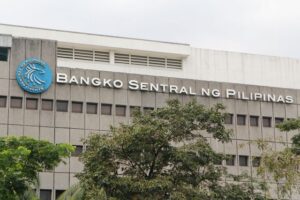If getting complete and accurate information through in an office situation could be a challenge for the gods at times, then imagine getting everyone on board and actually working in disaster situations.
Cliches are boring, but when life reminds us of them, we should know that it is because some things never really change.
So looking at the scenes of flooding and destruction following two super typhoons, “Tino” and “Uwan” recently, “No man is an island” popped into mind.
Island, islands, the Philippine islands. Often visited by typhoons, calamities have become so “normal,” or normalized, that evacuation centers are part of our language and calamity funds even more so.
Yet that quote, culled from the poem of John Donne, should tell us, with more understanding, that all these horrible things happening around us has to do with interconnectedness, exactly as those words are trying to say.
“No man is an island
Entire of itself;
Every man is a piece of the continent,
A part of the main”
Perhaps this is the core of all our problems in this country.
We know, for example, that the National Disaster Risk Reduction and Management Council or NDRRMC (why can’t we give our agencies easier names to remember?) is the main body responsible for the country’s disaster preparedness.
This agency is chaired by the Department of National Defense (DND) and works in close tandem with the Department of the Interior and Local Government (DILG) and also many other government agencies.
One of these departments is the Department of Social Welfare and Development (DSWD) tasked mainly with “response” in times of calamities. Another is the Department of Science and Technology or DoST which manages the prevention and mitigation aspects. Meanwhile, the Department of Economy, Planning and Development or DEPDev oversees the rehabilitation and recovery sides of the story.
But that is not all. On the local level, the local government units are the first responders to disaster, whatever they may be. The LGUs would be in the best position to implement the entire operation, from early warning systems to contingency planning, and so forth.
Of course, one cannot discount the other “key contributors” to disaster preparedness, and these are civil society organizations, the private sector and volunteers, without whose selfless efforts government bodies would perhaps be lacking in effectiveness or speed of delivery of services.
Not many know this but there is also a Philippine Disaster Resilience Foundation, or PDRF, which notably “coordinates with the private sector to build its disaster resilience capabilities,” according to a source.
For NDRRMC, whose main task is to make policies and coordinate the convoluted network of groups responsible for making this preparedness a reality, overseeing the ebb and flow of responsibilities would require immense organizational and management skills and perhaps an all-seeing eye.
But that is presupposing that everyone involved is on point with their mandated tasks and responsibilities, a problem our whole government seems to face when gray areas are revealed.
Who’s doing what? What agency is responsible for that? Questions like this come up when one is in endless traffic, in deep flood, in broken highways, in denuded forests, in powerless communities and so forth.
If getting complete and accurate information through in an office situation could be a challenge for the gods at times, then imagine getting everyone on board and actually working in disaster situations!
Moreover, there is the matter of funding. The NDRRMC gets its funding mainly from the so-called NDRRMF Fund, an “annual lump-sum appropriation in the national government budget or that much-discussed General Appropriations Act where mysterious movements have been known to happen.
Not saying the disaster agency is the same, but it is one thing that Filipinos have begun to examine more, with millions always having to start from scratch whenever the weather sweeps away all they had worked hard for every time disaster strikes.
Article by Dinah Ventura | Daily Tribune



